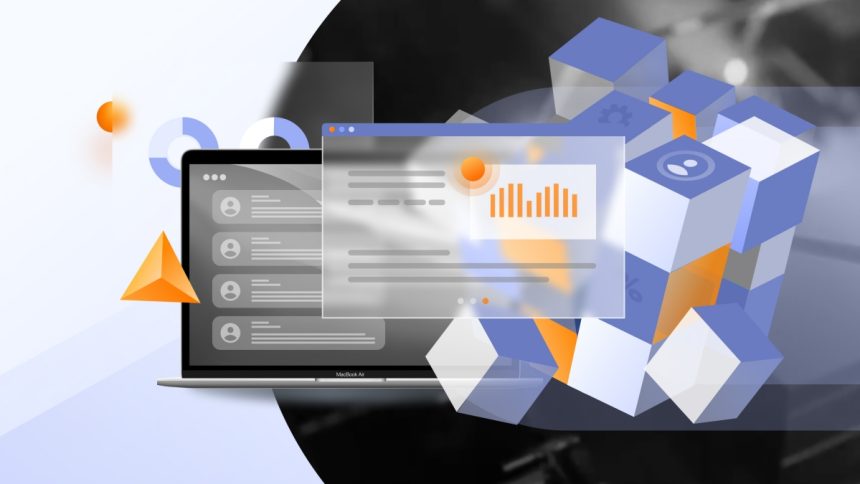Consumers are inundated with marketing messages from various brands vying for their attention. With so much noise in the marketplace, it can be challenging for companies to stand out and effectively engage with their target audience. This is where personalization comes into play.
Personalization is the practice of tailoring marketing messages and experiences to individual consumers based on their preferences, behaviors, and demographics. By delivering relevant content to the right person at the right time, companies can increase customer engagement, loyalty, and ultimately, drive revenue.
One of the key tools that companies can leverage to achieve personalization at scale is a Composable Customer Data Platform (CDP). A composable CDP is a centralized system that collects, integrates, and organizes customer data from various sources, such as CRM systems, social media platforms, e-commerce websites, and more. This data is then used to create a comprehensive view of each customer, enabling companies to deliver personalized marketing campaigns and experiences.
Personalization: The Key to Successful Marketing Strategies
Personalization has become an essential component of successful marketing strategies in today’s competitive landscape. Consumers are increasingly expecting personalized experiences from brands, and companies that fail to deliver on this front risk losing business to their competitors.
According to a study by Epsilon, 80% of consumers are more likely to do business with a company if it offers personalized experiences. Additionally, a report by Accenture found that 91% of consumers are more likely to shop with brands that provide relevant offers and recommendations.
By leveraging a composable CDP, companies can harness the power of personalization to create dynamic marketing strategies that resonate with their target audience. Here are some key ways in which a composable CDP can help companies achieve this:
1. Unified Customer View: A composable CDP allows companies to create a unified view of each customer by aggregating data from multiple sources. This comprehensive customer profile includes information such as purchase history, browsing behavior, demographics, and more. By understanding each customer’s preferences and behaviors, companies can deliver personalized marketing messages that are tailored to their individual needs.
2. Real-Time Data Insights: A composable CDP provides companies with real-time data insights that enable them to track customer interactions and behaviors across various touchpoints. By leveraging this data, companies can deliver personalized marketing messages at the right moment, such as sending a targeted email offer to a customer who has abandoned their online shopping cart.
3. Omnichannel Marketing: With consumers engaging with brands across multiple channels, companies need to deliver a consistent and personalized experience across all touchpoints. A composable CDP enables companies to orchestrate omnichannel marketing campaigns that deliver relevant content to customers on their preferred channels, whether it’s email, social media, or mobile.
4. Predictive Analytics: By leveraging predictive analytics capabilities within a composable CDP, companies can anticipate customer needs and behaviors, allowing them to proactively deliver personalized marketing messages. For example, a company can use predictive analytics to identify customers who are likely to churn and implement targeted retention strategies to keep them engaged.
Case Study: How Company X Leveraged a Composable CDP for Personalization
Company X, a leading e-commerce retailer, was struggling to engage with its customers and drive repeat purchases. The company had a wealth of customer data scattered across various systems, making it challenging to create personalized marketing campaigns at scale.
To address this challenge, Company X implemented a composable CDP to centralize its customer data and create a unified view of each customer. By integrating data from its CRM system, website analytics, and email marketing platform, Company X was able to segment its customer base and deliver personalized marketing messages tailored to each segment.
Using real-time data insights from the composable CDP, Company X was able to track customer interactions and behaviors across its website, email campaigns, and social media channels. This allowed the company to deliver personalized product recommendations, discounts, and promotions to customers based on their preferences and purchase history.
By leveraging predictive analytics capabilities within the composable CDP, Company X was able to identify customers who were likely to churn and implement targeted retention strategies, such as personalized email offers and loyalty rewards, to keep them engaged.
As a result of implementing a composable CDP, Company X saw a significant increase in customer engagement, loyalty, and repeat purchases. By delivering personalized marketing messages to its customers at the right moment, Company X was able to drive revenue and achieve its business goals.
Personalization is Key
In today’s competitive marketplace, personalization has become essential for companies looking to engage with their target audience and drive revenue. By leveraging a composable CDP, companies can create dynamic marketing strategies that deliver personalized experiences to each customer.
A composable CDP provides companies with a unified view of each customer, real-time data insights, omnichannel marketing capabilities, and predictive analytics, enabling them to create personalized marketing campaigns that resonate with their target audience.
By harnessing the power of personalization through a composable CDP, companies can increase customer engagement, loyalty, and ultimately, drive revenue. As consumer expectations continue to evolve, companies that prioritize personalization will be better positioned to succeed in today’s competitive marketplace.
Lynn Martelli is an editor at Readability. She received her MFA in Creative Writing from Antioch University and has worked as an editor for over 10 years. Lynn has edited a wide variety of books, including fiction, non-fiction, memoirs, and more. In her free time, Lynn enjoys reading, writing, and spending time with her family and friends.















